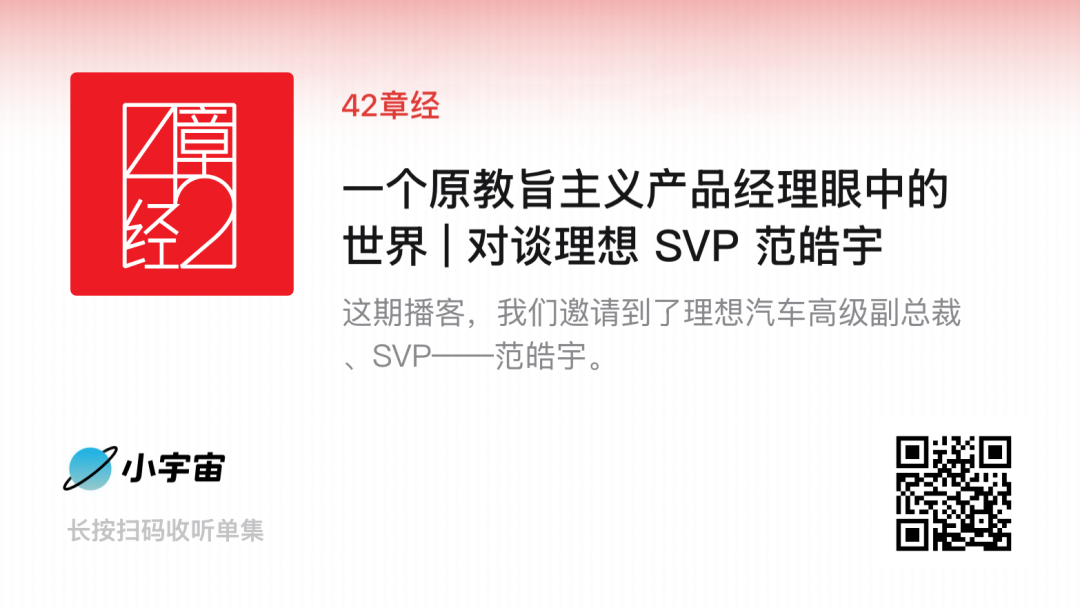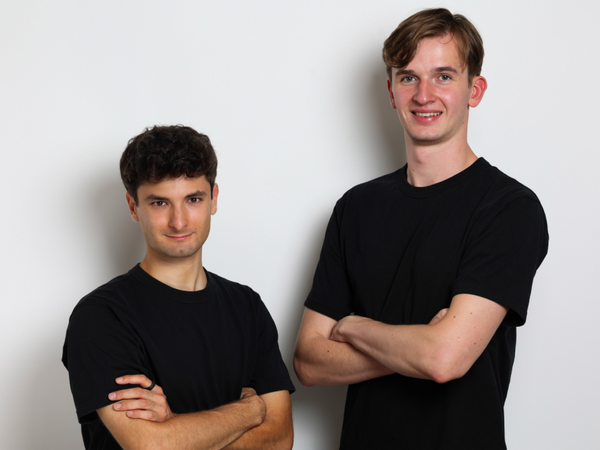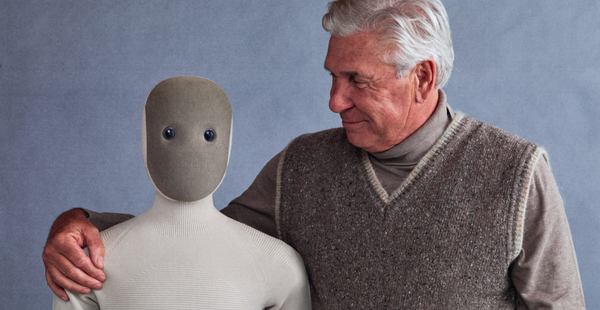The World Through the Eyes of a Fundamentalist Product Manager | 42 Lessons

Podcast Conversation: Fan Haoyu on Product, People, and Philosophy
Original transcript: ~30,000 characters. Edited version: ~10,500 characters.


---
Introduction
Qu Kai: Today we’re honored to have Fan Haoyu, Senior Vice President at Li Auto and a core decision-maker there.
Our aim: a pure conversation — not just about cars or Li Auto, but product methodology, growth, and a bit of philosophy.
---
Haoyu's Background
Fan Haoyu: I've worked in product and design for 25 years — through mobile phones, games, self-media, operating systems, and later automobiles. My move to Li Auto was more about wanting to live in Beijing than to join the company per se.
---
Beijing Then and Now
- 2013 era: High energy, diverse people with big ideals.
- Recent years: Growth slowed, space tightened, security diminished → anxiety rose → some left.
- Yet: Newcomers still arrive with ambition; Beijing remains vibrant, fertile ground for making things.
This connects to China's strengths:
- Robust supply chain
- Early Internet idealists who valued human connection over growth/monetization.
- Many still hold this idealism, wanting to recreate past momentum.
---
Layers of China’s Development
- Urbanization – migration to cities, becoming workers.
- Supply Chain – strongest integrated manufacturing network in history.
- Technology & Internet – floating atop the base layers.
Parallel progress → high social mobility and massive value creation.
---
Generalist Mindset & Product Philosophy
Core thread: Doing product/design = resource allocation.
- Observe → Understand → Combine → Compress elements.
- Compression is the most critical step.
- Rushing to metrics/test can kill creativity; thinking process is key.
Example: Roly-poly fingerprint device — born from observing chaos and desire for fun, merged in a functional yet playful form.
---
Commercial Value vs Interest
When goals are pure growth, cycles shorten, anxiety rises.
Creators & users both fatigue under high-frequency stimuli.
If the goal = resonance, approach changes:
- Usefulness is the door opener.
- Interest keeps long-term engagement.
Observation from UK Design Museum: Maker, User, Designer are now separated — but User has power. AI adds a new variable: true individualization may become possible.
---
User Stratification in China
- 1st–2nd tier cities: Over-supplied in utility, impoverished in “meaning & joy.”
- 3rd–4th tier cities: Rich social connections but limited opportunity.
- Rural/semi-rural: Resource gaps; deeper despair.
Mass-market products must:
- Help urban users be seen and recognized.
- Give lower-tier users access to top-tier products/experiences.
---
Cycles of Taste & User Needs
Taste is distinction; style comes from content production.
User needs are cyclical — preferences shift with era/events.
Despite economic talk, optimism persists:
- Hardworking spark in Chinese people remains.
- Drive to “make something” is strong.
- If it improves life, opportunity is huge.
---
Judgment, Data, & Willpower
- Data is subjective; feelings/judgment matter.
- Judgment = sequence of decisions shaped by feedback.
- To balance idealism & pragmatism: be a pragmatist first, then idealist.
- Willpower stems from belief in the goal.
---
Software vs Hardware
- Software: Harder to change once habits form.
- Hardware: Users expect adaptation with each iteration.
---
Understanding User Needs
A hypothesis-testing loop:
- Assume user motivations.
- Test (ask, observe).
- If rejected → change; if accepted → refine.
- Spread to more people → generate revenue → make new hypotheses.
---
Relationship Models with Users
- God – creator dictates all.
- Servant – gives whatever asked.
- Friend – equal communication; mutual value.
---
Haoyu’s Evaluation Set: Four User Sounds
- “Eh?” – catches the eye.
- “Hmm.” – satisfying experience.
- “Wow?!” – unexpected surprise.
- “Whoa.” – delight at lifecycle’s end.
3 sounds = brilliant; 2 = big sales; 1 = some sales; 0 = likely failure.
---
Defining “Interesting” in Products
- Emerges naturally through use, not deliberate logic.
- Cannot be compared; comes from closeness to people.
- Refined via user collaboration.
---
Logic vs Imagination
- Logic communicates results; imagination fuels creation.
- Over-focus on ROI kills beauty and taste.
- Experience life to keep creation “interesting.”
---
AI’s Impact on Organization
- AI collapses “process” — moves from need → result directly.
- End-to-end structures replace assembly lines.
- Individuals require holistic skills; self-revolution is necessary.
---
Chapter 42: Think About the Essence of Things
AI reshapes creation, offering personalization, efficiency, and sustainability via integrated, cross-platform tools.
---
Key Takeaways:
- Observe, compress, surprise – core to great products.
- Balance growth vs resonance.
- User segmentation matters.
- Taste evolves cyclically; judgment is vital.
- Be idealistic pragmatist with willpower.
- AI demands holistic skills and reshaped organizations.
---
Would you like me to create a diagram summarizing the "Observe → Understand → Combine → Compress" process for better visual clarity in the markdown?



